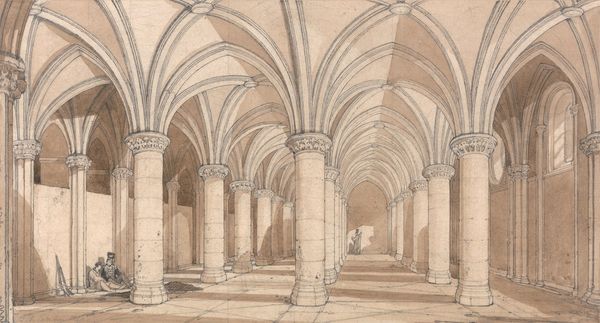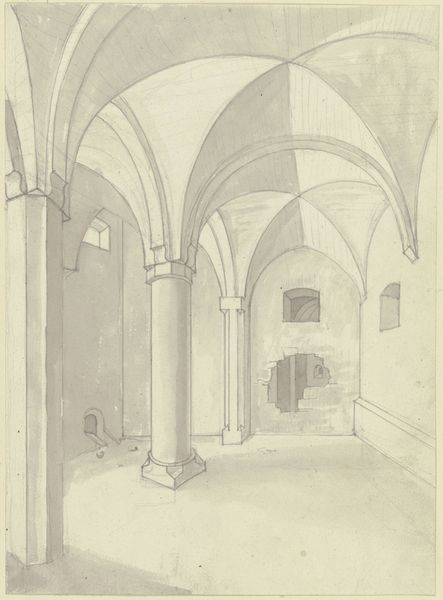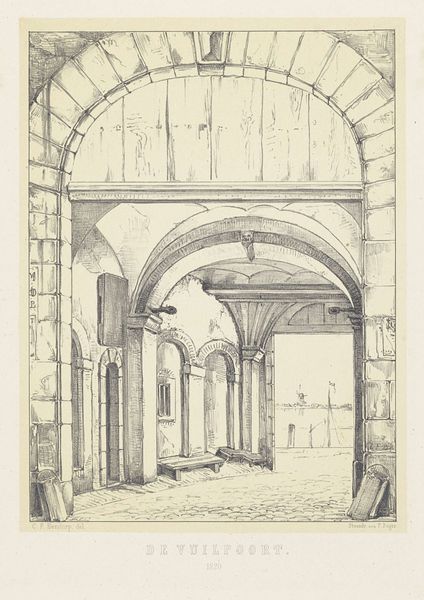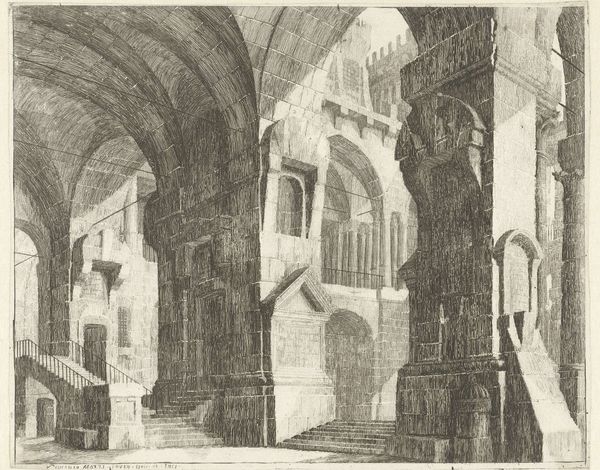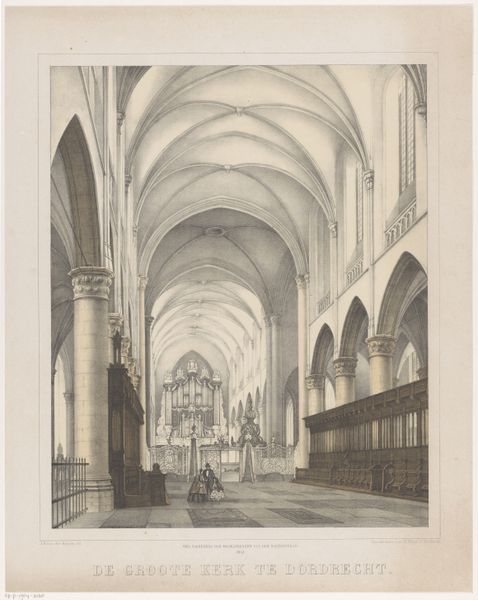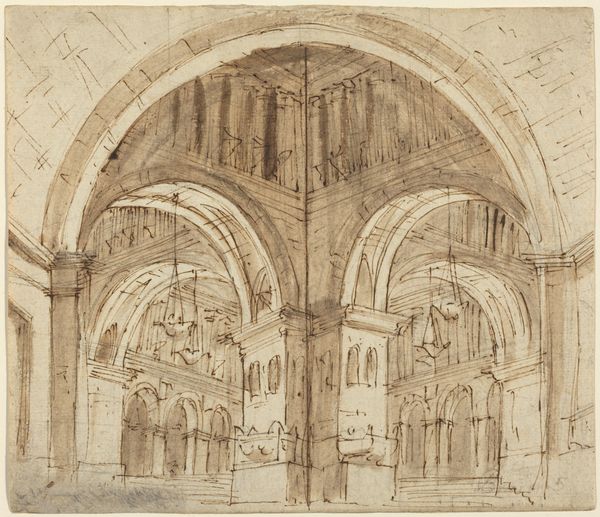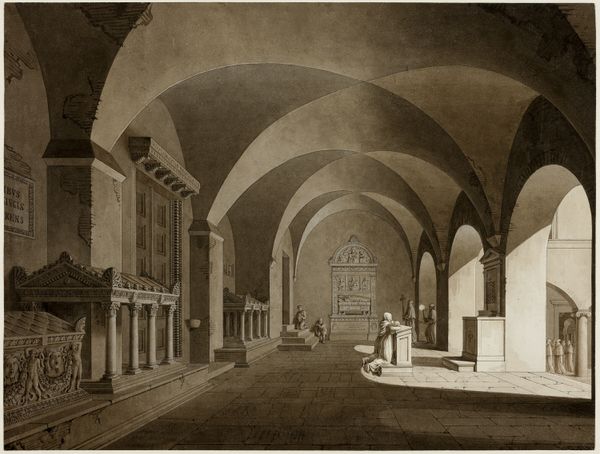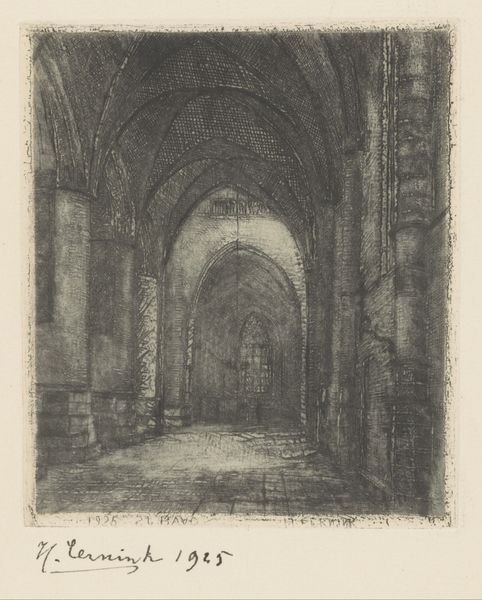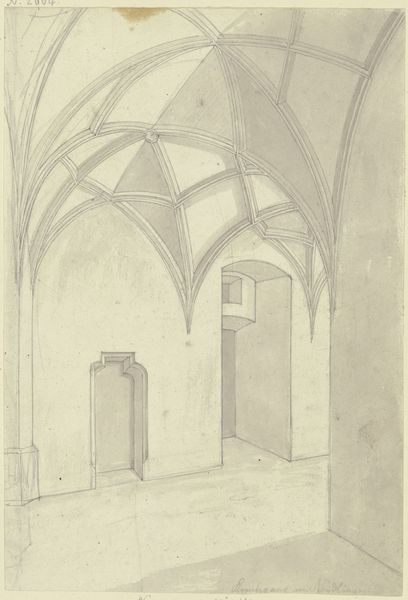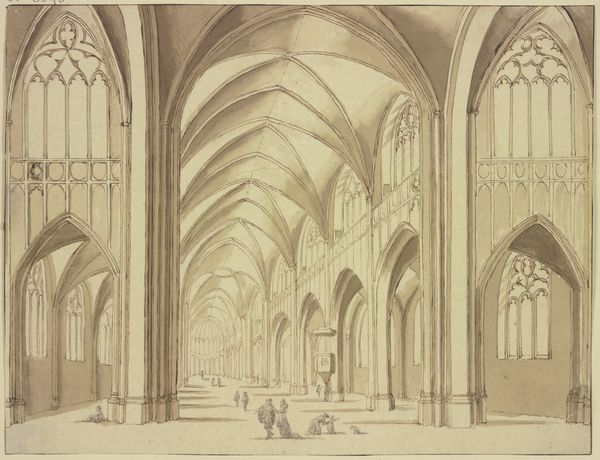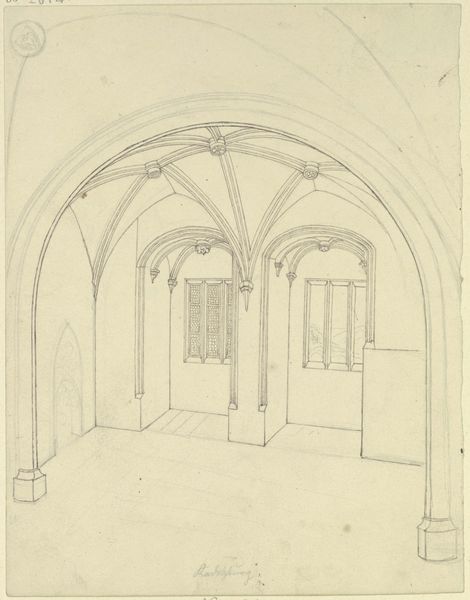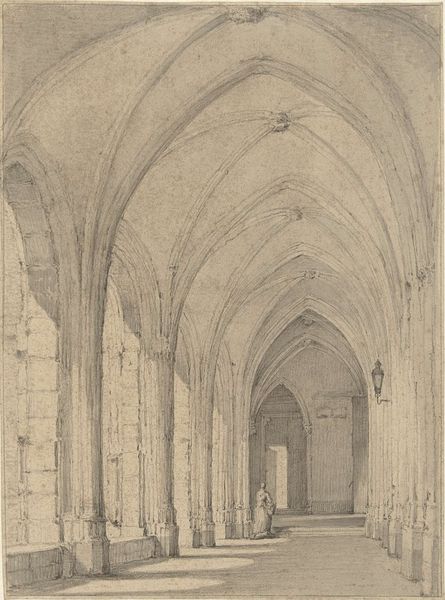
drawing, ink, pencil, pen
#
drawing
#
medieval
#
pen sketch
#
etching
#
perspective
#
ink
#
geometric
#
pencil
#
pen
#
cityscape
#
academic-art
Dimensions: overall (approximate): 25.1 x 36.8 cm (9 7/8 x 14 1/2 in.)
Copyright: National Gallery of Art: CC0 1.0
Editor: This is Oscar Bluemner's "Koln, Maria-Capitol" from 1892. It's rendered in ink, pencil, and pen, creating this detailed depiction of an arched corridor. I find the heavy use of line gives it a sense of confinement and historical weight, even though it's just a drawing. How do you interpret this work? Curator: It's crucial to acknowledge how the historical context impacts the viewing of this image. Consider, in 1892, what did architectural representation mean? Bluemner chooses the cloister, a space of enclosure, reflection, and often, religious or spiritual dedication. Think about who has historically had access to spaces like these, and who has been excluded. The strong perspective lines almost push us back, right? What does that forced perspective say about the artist’s relationship with institutionalized space and knowledge? Editor: That's interesting, I was focusing more on the visual elements but I see what you mean about access and history. The rigid structure and stark contrast definitely evoke that. Curator: Exactly. Bluemner’s choice isn't simply about aesthetics. It invites us to investigate the power dynamics inherent in architecture and who benefits. It’s about space, place, and power. What power does this space emanate in your eyes? Editor: Thinking about it now, there's also an implication of separation, or maybe contemplation within that separation... Curator: Precisely. Consider then how these kinds of spaces have historically excluded certain groups – women, people of color, the working class – shaping not only the physical landscape but also social hierarchies. Editor: That makes me reconsider the artwork entirely. I hadn't really thought about the social commentary a seemingly simple drawing of a cloister could convey. Curator: Art invites those critical dialogues, always. That's where its power truly lies: prompting questions and revealing unspoken narratives of gender, power and privilege. Editor: I will never see perspective the same way, thank you. Curator: And thank you for bringing a fresh perspective!
Comments
No comments
Be the first to comment and join the conversation on the ultimate creative platform.
